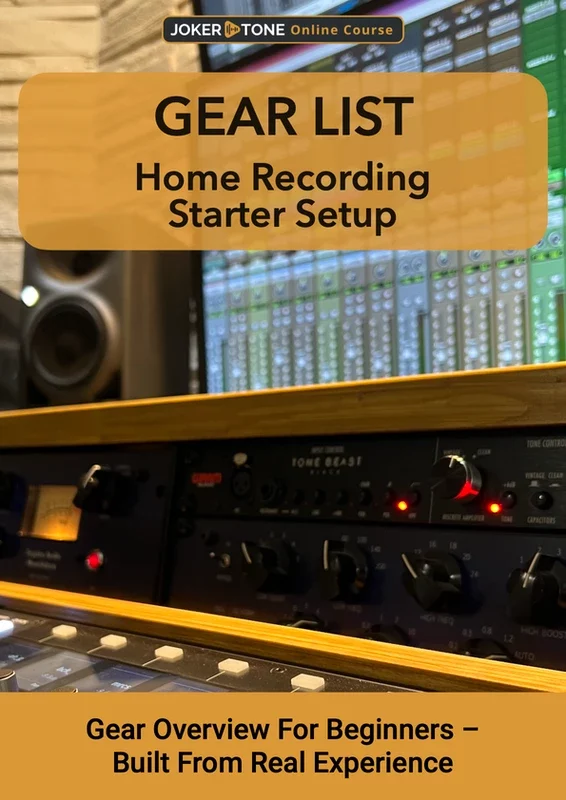In this podcast episode, I explore one of the biggest hurdles for beginner music producers: latency in home recording. If you’ve ever connected a mic or guitar and felt like you were hearing an echo of yourself—making it nearly impossible to stay in the groove—then this discussion is undoubtedly what you need. I share how I transitioned from tracking through older analog gear to using today’s recording software, and I break down simple ways to reduce the delay between performing and hearing yourself so that your takes feel natural, tight, and in time.
Latency in Home Recording
Latency occurs when the sound from your instrument or voice travels through your recording chain and takes a moment to return to your headphones. In a basic analog setup, the delay is so small that it’s barely noticeable. The moment you route that signal into a computer and back again, however, those tiny delays can add up and make you feel like you’re fighting an invisible echo. That split-second lag can throw off your timing, undermine your confidence, and force you to spend extra time fixing rhythm issues later on.
I walk you through three ways most home studios handle monitoring to keep latency at bay. One method bypasses the computer so you hear your performance almost instantly, though you won’t catch any effects you add later until after you record. Another approach lets you add real-time processing—like compression and reverb—inside your interface before sending audio to your computer, which keeps delay to a minimum while still letting you track with more polished tones. The third option relies entirely on your recording software, mixing your live input with your existing tracks and sending the combined signal back to your headphones. Each approach has its pros and cons, but all aim to keep delay low enough that you stay in sync with yourself.
Several factors influence how much latency you experience. Your choice of monitoring method, the power of your computer, and how many effects you run all play a part. Heavy processing can introduce delays briefly, so I recommend bypassing unnecessary plugins when you’re tracking and saving them for mixing. If you still hear an echo, check where your sound is coming from, verify your routing settings, and simplify your session to isolate the source of the lag.
I know how discouraging it can feel when timing issues get in the way of creativity. By sharing my own experiences—from zero-delay analog tracking to balancing today’s digital tools—I offer clear steps to help you reduce latency and regain confidence in your home studio. You don’t need expensive gear to start; often, small adjustments in your software settings make a huge difference.
Joker Tone Course GEAR LIST

If you’re ready to build or improve your home setup, grab my free gear guide at jokertonecourse.com/gearlist.
It’s packed with honest recommendations for microphones, interfaces, headphones, and more—everything I use by myself or what I would check out if I started with my home recording studio from scratch. Whether you’re laying down your first vocal take or simply curious about how pros keep their recordings tight, tune in to this episode to learn practical tips that will keep you playing in time and sounding great.
Key topics and takeaways of the Episode
Defining Round-Trip Latency
Overview: What RTL is and how it accumulates in a home studio setup.
Takeaways:
- Recognize the path your signal takes—from mic to interface, through the DAW, and back.
- See how 6–12 ms of delay can feel like an echo and disrupt your performance.
Direct Monitoring: Zero-Latency Basics
Overview: How to monitor your live signal straight from the interface before any digital conversion.
Takeaways:
- Discover the “blend” knob method for mixing live and playback.
- Know why this is often the simplest, most foolproof approach for beginners.
DSP-Based Monitoring: Real-Time Effects with Low Latency
Overview: Using an interface with built-in DSP (e.g., Universal Audio Apollo) to add real-time plugins without noticeable delay.
Takeaways:
- Learn how to route your mic through the UAD Console app (or similar DSP mixer).
- Understand the trade-off of managing two mixers (DSP software and your DAW) to get in-headphone reverb, compression, and EQ.
DAW-Based Monitoring: When You Rely on Your Computer** *Overview:* Tracking directly in your DAW, balancing buffer sizes and sample rates for the lowest possible latency.
Takeaways:
- Get tips on setting 48 kHz sample rate and a 64-sample buffer as a starting point.
- See how CPU load and plugin count affect your round-trip delay.
Core Factors That Influence Latency
Overview: A rundown of the three main elements—interface/connection, computer power, and plugin usage—that determine your RTL.
Takeaways:
- Compare USB vs. Thunderbolt interfaces and why connection type matters.
- Realize how a faster CPU lets you push buffer lower without audio dropout.
- Identify which plugins add the most delay and when to bypass them during tracking.
Troubleshooting Common Latency Problems
Overview: A step-by-step checklist to diagnose echo, doubling, or timing issues in your home studio.
Takeaways:
- Verify that you’re only monitoring through one source (direct or DAW).
- Double-check input/output routing in your interface or DSP console.
- Adjust sample rate and buffer settings before diving into plugin troubleshooting.
Choosing the Right Monitoring Setup for You
Overview: Guidance on picking between direct, DSP, or DAW monitoring based on your budget, gear, and workflow.
Takeaways:
- If you’re starting out, embrace direct monitoring for simplicity.
- For real-time in-headphone effects, consider a DSP-capable interface.
- If you already own a reliable interface and computer, optimize your DAW’s low-latency mode.

